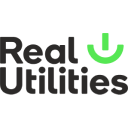The Grouply energy comparison service helps you make informed decisions about buying energy for your home. We help you compare, select and buy the best available residential retail energy plans in your area.
Our unique WattPrice pricing analysis combines everything into a simple, easy to understand comparison price for energy. WattPrice is the effective price per unit you would pay for a retail energy plan based on your estimated or stated kWh or MJ consumption, the published plan pricing including supply charges, guaranteed and conditional discounts, as well as other financial incentives such as welcome credits or sign-on bonuses.
Most comparison services only compare plans from the suppliers that they have commercial commissions agreements with. We compare generally available residential electricity, gas and dual fuel market offers from every energy retailer in Australia. See our FAQ Do you compare all the energy plans in the market? for more on what we mean by this.
And finally, we believe in privacy first. You shouldn’t have to provide your personal contact details to see comparisons — we don’t like pushy sales calls either. If you choose to buy a plan online or connect with a vendor we make this as easy and simple as possible.
The Grouply energy comparison service is powered by Grouply.co, a next-generation decision-support platform for Australian households. Grouply.co is operated by 4th Party Australia Pty Ltd, a passionate team building platforms and tools to help householders compare and buy complex and expensive household products and services.
4th Party is not owned by or affiliated with any of the vendors of the products and services we present in the Grouply Service, nor do we own any of those providers.
To get started, simply enter your postcode so we can know which energy distribution zone your property is in. Some postcodes cross multiple zones, so we might ask you to specify which zone you’re in. If you don’t know, you can find this information on your bill
We then estimate your average daily energy consumption and establish your meter type based on a few simple questions. We use benchmark data from the Australian Energy Regulator (AER) to estimate your average daily energy usage — this is the same data that retailers use to display the average usage data that’s included on your bill. If you have a bill handy, you can directly input your consumption for a more accurate result.
We then use your estimated or stated energy consumption to calculate the price for every relevant plan in our database. We present these prices as a cost per kWh for electricity, and price per MJ for gas. We call this WattPrice.
One of the biggest factors influencing bill price is your own payment behaviour—many retailers offer significant ‘pay on time’ discounts, and some retailers offer additional discounts for direct-debit payment plans. If you don’t pay your energy bills on time, it can cost you significantly more. We let you see the price impact of your payment behaviour by selecting your pay-on-time behaviour. We don’t reveal this information to the retailer. It’s there to help you understand what the right plan is for you.
We also factor in the price impact of the various incentives and bonuses that many retailers offer. Our approach is to include those incentives that have a cash or cash-equivalent value, and to apply these pro-rata over 1 year. So if a retailer offers an $80 incentive, we’ll apply that as a $20 price reduction per quarter.
Finally, we rank all the plans by WattPrice, showing the least expensive plans first.
You can filter and sort offers with or without incentives, based on your willingness to enter a contract, and your tendency to pay on time.
Click ‘View’ or ‘Buy’ to see specific plan details, and you can buy online if this option is available or click through to contact a retailer directly.
The Grouply energy comparison service is a better energy comparison and buying experience. Here’s how:
- Our comparisons are based on a comparison rate for energy — our unique WattPrice pricing analysis provides simple, transparent apples-to-apples price comparisons that take into account plan consumption tariffs, distribution network daily connection fees, guaranteed and conditional discounts as well as financial incentives offered.
- We compare all the providers — we present and compare residential retail market offers from every retailer in the market. See our FAQ Do you compare all the energy plans in the market? for more on what we mean by this.
- We source exclusive offers — which we then present within overall market comparisons so you can easily see how these exclusive deals stack up.
- And we put your privacy first — which means you don’t have to provide your phone number, email or street address to compare plans. See our Privacy Statement for more information.
Our objective is to present and compare the generally available residential retail market offers from every retailer in Australia that offers residential energy plans.
This includes single-rate, block-rate and controlled-load tariffs. Currently we exclude time-of-use tariffs and Green Power options from our comparison model.
A register of licensed retailers is maintained by the relevant regulatory authorities in different parts of Australia:
- VIC — licensed by Essential Services Commission - public register of licensees is available here.
- NSW, QLD, SA, ACT, TAS — licensed by Australian Energy Regulator - public register of licensees is available here.
- WA and NT — regulated retail pricing set by Utilities Commission in NT and by Public Utilities Office in WA
Not all of the licensed energy retailers offer residential plans. Those that do will publish Price and Product Fact Sheets for those offers, and we use a reputable external specialist provider to source and collate these Fact Sheets every month.
Some retailers directly supply us with their latest plan and price information when they make changes.
However, things are always changing in the residential retail energy market—new retailers enter the market, old ones leave, new plans get offered, old ones get retired—so it’s possible that despite our ongoing work to maintain our database, we may not always have every plan in our database, or we may retain plans that have recently been retired. Also, retailers can sometimes keep some of their offers deliberately under wraps, meaning that plan is not ‘generally available’ for purchase.
Our guarantee to our users is that we work hard to include in our comparison service the generally available residential retail energy plans (excluding Green Power and time-of-use tariffs) that are offered by the energy retailers in Australia, regardless of if we have a commercial agreement with them. If you spot an error or a gap, please notify us at updates@grouply.co and we’ll update our database.
We currently compare plans from the following providers:
We present a ranking of all relevant plans in our system, including any exclusive offers, according to our calculation of the effective price per unit that you would pay for a retail energy plan. We call this the WattPrice, a comparison rate for energy plan pricing.
This means that our users can always see which plan is the most cost effective for them, based on their own consumption patterns, household profile, preferences and payment behaviours.
Our WattPrice calculation shows the effective price per unit for any energy plan. Energy contracts are complicated, with many variations on tariff structure, conditional discounts, fees, incentives and other elements that together determine the actual price you will pay. Our WattPrice analysis makes that calculation for you on every single offer available to you, based on your own personalised energy profile, and incorporating your ability to access discounts.
WattPrice is a comparison rate for energy that lets you more accurately understand and compare the effective cost per unit for energy plans that can have very different underlying pricing, tariffs, fees and one time and conditional discounts.
We designed WattPrice because we wanted a comparison tool for energy that would be just as simple and just as useful as unit pricing is for grocery items in the supermarket, or comparison rates for financial products.
There are many methods used by energy retailers to calculate the price consumers will pay for their energy consumption. This makes it very difficult for you to make an accurate assessment of how different energy plans compare.
WattPrice is a calculation of the effective price per unit that you would pay for a retail energy plan, personalised for your estimated or actual consumption and your behaviour as an energy consumer (particularly your pay on time frequency).
WattPrice takes into account energy consumption tariffs, network connection fees, conditional discounts and financial incentives offered to provide a simple, apples-to-apples price comparison between different energy plans.
WattPrice currently does not take into account:
- Pensioner and other forms of concessions. See our FAQ What about Pensioner and other energy concessions?
- Solar Feed-in Tariff (FiT). We do display the minimum FiT for each solar offer, but currently do not calculate the price impact of FiT on your estimated bills. See our FAQ How does Solar impact on WattPrice?
- Time of Use (ToU) tariffs incluing peak/off-peak and Flexible or peak/shoulder/off-peak tariffs. See our FAQ What are Tariffs?
- GreenPower
In the Grouply energy comparison service, we use each plan's calculated WattPrice to rank all the energy plans, so you can easily see which one is the cheapest for your consumption level and bill payment behaviour.
See our WattPrice page for more information on how WattPrice is calculated
We estimate the kWh consumption impact of your solar system based on the kW rating you provide and your household location. The higher your solar system rating, the greater the potential to generate your own energy, and the lower your estimated energy import requirements will be.
WattPrice does not currently include the potential dollar value of exported energy through a Feed-in-Tariff in WattPrice. Your ability to sell energy generated by your solar system is dependent on the pattern of time of use consumption for your household. This is beyond the current scope of WattPrice, which is designed to measure the effective price per kWh for energy that you import from the grid.
However, when you indicate that you do have solar, we display the Feed-in-Tariff rate on our plan summary and details pages for your review.
Tariffs come in many different shapes and sizes. There are 3 main tariff types in common usage in Australia today, and we support all three in our WattPrice comparison price methodology:
- Flat Tariff — fixed price per kWh or MJ for all usage.
- Block Tariff — one price for all usage up to a certain kWh or MJ consumption threshold and another price for usage beyond this threshold. Depending where you live in Australia, your energy tariff may have multiple blocks, with separate prices applied to each block.
- Two-Rate or Controlled Load Tariff — one price for all peak consumption and a second price for all off-peak or controlled load consumption.
A fourth tariff type is Time-of-Use, where different prices will apply for consumption at different times. Retailers will apply one price for peak consumption, a second price for off-peak consumption and a third price for shoulder periods. WattPrice does not presently include Time-of-Use tariffs.
To perform our WattPrice calculation, we first need to establish the daily energy consumption for your household.
You can tell us your actual average daily electricity or gas consumption if you know this (this is displayed on your energy bill), otherwise we use an estimate based on your energy profile including;
- your household size
- presence of swimming pool
- presence of gas mains connection
- presence of solar panels
The data that we use to estimate your kWh electricity and/or MJ gas consumption is drawn from a study commissioned by the Australian Energy Regulator (AER) to establish the benchmark consumption figures for different household sizes in different localities in Australia.
This information was prepared to assist energy retailers to meet their regulatory obligation to present the consumption benchmark chart you can see on your household energy bills. Further information on this study is available on the AER website.
If you do not provide answers to these questions, we will calculate your WattPrice against a kWh or MJ estimate that assumes:
- 3 person household size — this is our closest data point to the average Australian household size reported by the Australian Bureau of Statistics
- No swimming pool — only around 11% of Australian households have a pool
- Unknown gas mains connection — the source data we use provides a separate set of kWh estimates where the gas connection status is unknown.
In order to calculate pricing for Two-Rate tariffs or Controlled Load tariffs, Wattprice needs to calculate average kWh consumption for both peak and off-peak or controlled load usage.
We do this using the AER consumption benchmark data as follows:
- We apply the peak tariff pricing to the average energy consumption of a gas mains connected household
- We derive the off-peak kWh consumption amount by subtracting the ‘non-gas mains’ consumption estimate from the ‘gas mains’ consumption estimate. Because gas is largely used for hot water and heating, this gives us an approximation for the additional energy consumption of non-gas households to support the services that are controlled load appliances.
- We apply the off-peak tariff pricing to this derived off-peak kWh consumption amount
Supply charges are daily fees for your connection to the electricity or gas supply network. Supply is priced independently of the energy that you consume —
so if you use no electricity or gas whatsoever in a billing period, you will still see supply charges on your bill.
Supply Charges are calculated daily over the duration of each billing period. We show supply charges based on a quarterly bill profile for electricity, and bi-monthly
bills for gas. To calculate quarterly electricity supply charges, we multiply the daily supply charge by 365.25 and divide by 4. Gas bills are usually issued bi-monthly,
so for gas we multiply the daily supply charge by 365.25 and divide by 6.
Discounts often feature prominently in the marketing of energy plans, but it’s hard to understand what the impact will be, since the discount can apply to either your kWh consumption, or to the final dollar amount of the bill.
Also, retailers often make their discounts contingent on on-time bill payment and direct debit payment arrangements, so your behaviour as a bill payer is a major influence on the effective price you will pay per kWh or mJ of usage.
Also, retailers can set the base price against which the discount is calculated, so there is no guarantee that a plan wth a larger discount will be cheaper than one with a smaller discount. In fact, its possible for a plan with no discount at all to be cheaper than one with a seemingly large discount.
WattPrice automatically includes any guaranteed discounts. We also accommodate the price impact of conditional discounting and on-time bill paying by letting you specify if, and how often, you pay your energy bill on time, and recalculates your effective price per kWh or mJ accordingly.
- When you say you pay by Direct Debit we apply the full potential discount benefit for each plan, including any incremental discounting that may be specifically tied to direct debit payment.
- When you say you always pay on time, we apply the full potential discount benefit for each energy offer, exclusive of any incremental Direct Debit discount.
- When you say you sometimes pay on time, we apply half the potential discount benefit for each offer, exclusive of any Direct Debit discount.
- When you say you do not pay on time, we do not apply any discount benefit for each offer.
Many retailers offer one-time incentives in addition to discounts to market their energy plans. Incentives can take many forms, including:
- fixed cash rebate or cash-back on the first bill
- variable cash-equivalent incentives such as ‘first month free’ offers
- non-cash incentives such as movie tickets or sports jerseys
- conditional incentives, such as a sign-up bonus that applies only if you buy both electricity and gas at the same time
It’s tricky to include such incentives in a pricing analysis, because they will normally only impact the first bill, sometimes reducing that first bill by a significant amount.
Because of this, we exclude all incentives by default.
However, we allow you to choose to include such incentives in your comparison, and we provide a toggle to allow you to turn these incentives on or off on our search results screen.
Where you do choose to include incentives, we use the following approach to include them in our WattPrice pricing calculation:
- Only cash or cash-equivalent incentives will be included. Non-cash incentives such as movie tickets and sports memorabilia are always excluded.
- We calculate the price impact of those incentives over 1 year
Energy retailers may use a wide variety of fees for different components of their plans. Unlike tariffs, discounts and supply charges, detailed fee structures are not required to be included in the regulated Price and Product Information Statements that retailers are obliged to publish for each plan.
Fees can include early termination fees and late payment fees, as well as the less well-known dishonoured payment fee, payment processing fees and service or administration fees for network-related services.
WattPrice does not presently include these fees in its comparison price methodology.
We’ve worked hard to design a business model that provides great service to consumers and cost effective sales and marketing solutions to participating retailers and affiliate partners, while enabling us to continue to operate, develop and support our service.
Our main revenue sources are:
- Some retailers pay us commissions on the sale of some of the products we present within the service. Commissions can vary by product and service category, and by fulfilment channel. Our commercial relationships with vendors do not influence our product comparisons in any way
- Our partners may pay licence fees to provide the Grouply service to their members and customers
We do not run advertising on our site, and we will never sell or rent our user data to external parties for marketing or advertising purposes.
We will always strive to deliver full market comparison of the generally available products and services from every provider in the markets we cover, and we never artificially promote or reposition any of the products and services we present based on commission potential.
We currently support retail electricity, retail gas and retail dual fuel (electricity + gas) plans.
You can use the Grouply energy comparison service without providing anything other than a postcode. Unlike many other comparison services, we do not require a phone number, email or street address to access our service. As documented in our privacy agreement, your personal information is never shared with any third parties without your explicit consent. See our Privacy Statement for more information.
Energy prices just keep going up, but there is an active and competitive market of energy retailers who regularly update their offers and pricing. Most households know it’s possible to save money by switching providers, but it can be difficult to figure out which offer is the right one for you.
That’s where the Grouply energy comparison service really helps. Our WattPrice comparison model calculates the effective price per unit that you would pay and compares offers from every provider to help you find the best plan for your home.
No. Switching retailers is easy. The first thing to understand is that the energy supply to your property is handled by your distribution company, not your retailer.
Your retailer simply calculates your bill based on the usage information provided by the distributor, so you can switch retailers without interrupting your power supply and there is no need to be reconnected after you switch.
Use the Grouply energy comparison service to choose the retailer and plan you want to switch to. Then click the ‘View’ or ‘Buy now’ button to proceed. Depending on the arrangements we have in place with the retailer, you’ll be able to contact the vendor, request a call back, or apply online to complete your purchase.
Your new retailer will handle the rest of the process for you, and your power supply will not be interrupted.
You will receive one final bill from your original retailer, and future bills will come from the new retailer you’ve switched to. If you’re under contract with your original supplier, there may be an exit fee applied to your final bill.
There’s a 10 day cooling off period where you can reverse your switching decision if you change your mind. You can contact either your original or your new retailer within this 10 day period to cancel your switch.
Feel free to provide feedback or suggest feature enhancements by emailing us at hello@grouply.co.
From 1 July 2019, new regulation replaced the old Standing Offers with Default Offers across most of the National Energy Network. There are two kinds of Default Offer:
- The DMO is set by the AER for Residential and SME single and single + controlled load tariffs in NSW, SA and South East QLD.
- In Victoria, the Essential Services Commission sets the Victorian Default Offer (VDO) for single rate and controlled load tariffs in Victoria only.
Default Market Offer (NSW, SA, and South East QLD)
DMO rates are expressed as a single dollar value for a set annual consumption level, rather than as a price per day plus a price per unit of usage.
DMO sets a cap on the price that a customer will pay when they ave not entered into a Market Offer with their retailer. DMO also sets the benchmark against which any discounts offered in Market Offers must be expressed.
Previously, such customers would be on a Standing Offer, and retailers had liberty to both arbitrarily set their own Standing Offer rates, then use those rates as the benchmark to calculate discounts.
See https://www.aer.gov.au/retail-markets/retail-guidelines-reviews/retail-electricity-prices-review-determination-of-default-market-offer-prices for more information on the DMO.
Victorian Default Offer (Victoria only)VDO rates are expressed as a price per day plus a price per unit of usage. Retailers are free to market and sell Market Offers, but must make the VDO price available for those who want it.
VDO sets a cap on the price that a customer will pay when they ave not entered into a Market Offer with their retailer. VDO also sets the benchmark against which any discounts offered in Market Offers must be expressed.
Previously such customers would be on a Standing Offer, and retailers had liberty to both arbitrarily set their own Standing Offer rates, then use those rates as the benchmark to calculate discounts.
See https://www.energy.vic.gov.au/victoriandefaultoffer for more information on the VDO.











































